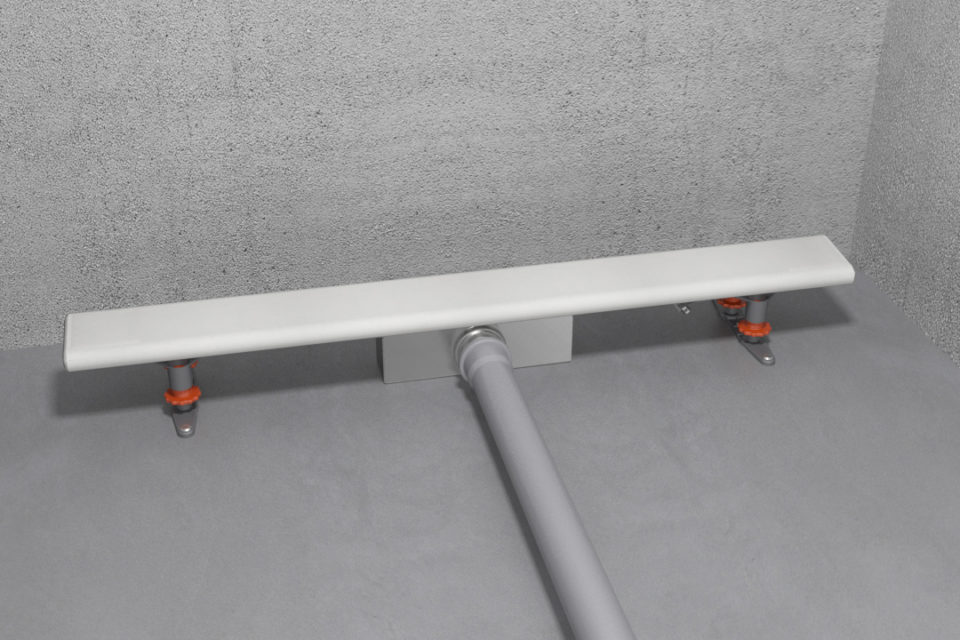Mastering-Learning-Becoming Skilled At Your Own-DIY-Personal Shower Drain-Bathroom Drain-Drainage System Installation-Setup-Project
Mastering-Learning-Becoming Skilled At Your Own-DIY-Personal Shower Drain-Bathroom Drain-Drainage System Installation-Setup-Project
Blog Article
Here below you will find more brilliant facts on the subject of How to Install a Shower Drain in a Basement.

Updating a restroom is one of the a lot more preferred residence renovation tasks. Handling the plumbing for draining your shower can be exceedingly easy unless you overdo it.
Handling Your Own Shower Drain Installation Project
You can physically build an enthusiast for your brand-new shower, yet you truly need to think about it. Do you really intend to enter the issues of getting the sloping correct, not to mention seeing to it every element of it is waterproof? And also I indicate every aspect! It is a lot easier to just acquire a pre-cast collection agency online or at your local copyright, Residence Depot or hardware shop. Building one may seem like an excellent idea, yet you will most likely really feel differently after a number of hours.
Despite just how you tackle obtaining a frying pan, you ought to strive to make use of one that has the drain located in the same place as the original pan. Moving the drainpipe pipelines can be a job, particularly if the builder utilized an one-of-a-kind framework structure. If you are figured out to relocate the drainpipe, you are going to have to reduce the pipeline or lengthen it, which might suggest destroying large portions of the floor. Rephrase, you are mosting likely to be looking at a numerous weekend task.
Assuming we have our drain aligned, the real link is rather straightforward. The drainage pipeline need to be facing upright approximately the enthusiast. It will certainly often resemble a "U", which suggests it works as a cleanout to maintain nasty scents from coming back up from the drain. To connect the drainpipe, you are going to create a water limited connection between a drainpipe cap on the top of the pan and the water drainage pipe. Equipments vary, yet you are normally going to do this by placing a coupling item on the top of the drainage pipeline. This is after that covered with gaskets as well as literally screwed right into the drain cap. The drainpipe cap ought to function as a locknut, to wit, it screws straight onto the combining.
The tricky part of this process is getting your drain cap to suit a water tight position in the pan. This is achieved by withdrawing the drainpipe cap as soon as you make certain every little thing meshes. At that point, you put plumbings putty around the underside of the cap and after that screw it back on. The putty ought to develop a tight seal between the cap and the shower pan, which maintains water from flowing under it and also right into the mounting under the shower.
Certainly, restroom showers been available in a variety of designs these days. If you purchase an enthusiast, they generally included plumbing instructions or the shop can keep in mind anything unusual you need to understand. It sounds intricate, however is typically quite simple. Enjoy!
Whether you are a tub or shower individual, most individuals try to find shower just alternatives when purchasing a home. This straightforward truth implies more than a couple of homeowners invest a weekend break upgrading or mounting showers in their washrooms. Luckily for you, it is a rather easy process.
A collector or frying pan refers to the straight surface located at the end of the shower. The collector usually contains a non-slip surface area somewhat banked in the direction of the facility or anywhere the drainpipe lies. Combined with three to 4 inch wall surfaces around the side, the goal of your shower drainage plumbing is to get the water to flow to and also down the tubes.
Tips for Installing a Shower Drain Assembly
Renovating a bathroom can be exciting as well as fulfilling if you’re tackling the job DIY-style. After you cross off the bigger decisions such as tile style, paint colors, and fixtures, you’ll need to finalize smaller details – such as the shower drain. In this article, we’re sharing some tips for selecting and installing the right drain assembly for your updated shower.
What is a shower drain assembly?
Shower bases or pans typically only come with a pre-drilled drain hole. Since the pan slopes toward the drain, you should consider the placement – left, center, or right – when designing your shower. You’ll need to purchase and install a shower drain assembly that connects the shower pan to the drain pipe underneath the shower. There are a few types of assemblies, which will be covered below.
Size of a shower drain
When it comes to installing drains, size matters. The recommended pipe size for a shower drain is 2 inches, whereas most tubs use 1.5-inch pipes. Why the difference?
Shower pans are shallower than tubs, so there’s a higher risk for overflow. So, the larger pipe allows for quicker draining. If you are replacing an old tub with a newer stand-up shower, you will need to make additional plumbing adjustments to accommodate the 2-inch pipe.
Types of shower drain assemblies
There are three common types of shower drain assemblies: compression shower drain, solvent-glue shower drain, and tile shower drain. The layout, design, and materials of your shower can determine which type of shower drain assembly will work best.
Compression shower drain
This type of assembly attaches to the drain pipe with compression washers and nuts. The drain fitting is typically installed into the base, and then the base is installed into the bathroom floor. This makes compression-style drains easier to install than other options, particularly if you don’t have easy access from the floor under the shower base. Drains are available in a wide range of materials such as PVC (polyvinyl chloride), ABS (Acrylonitrile Butadiene Styrene), and brass, and can be used for acrylic, fiberglass, and steel shower bases.
Solvent-glued shower drain
Made of either polyvinyl or ABS, this type of shower drain is sealed to the drain pipe with solvent glue and silicone. Since you’ll be working underneath the drain pan, we only recommend using this type of drain if you have access under the shower, such as from a basement or crawlspace. It’s also important that you match the type of plastic of the drain with the drainpipe. If you take these precautions, you can install a solvent-glued drain assembly with acrylic, fiberglass, and steel shower bases.
Tile shower drain –
Drain assemblies for custom tile showers feature a waterproof membrane liner placed between two flanges. The tile is installed on top of the liner, collecting any water that seeps through the porous grout. A metal strainer is installed in line with the tile over the drain.
https://www.epshawaii.com/blog/tips-for-installing-a-shower-drain-assembly/

I am very involved in How to Install a Shower Drain and I am assuming you enjoyed the new piece. Be sure to take the opportunity to distribute this blog post if you enjoyed it. Thanks a bunch for your time. Please stop by our blog back soon.
Report this page